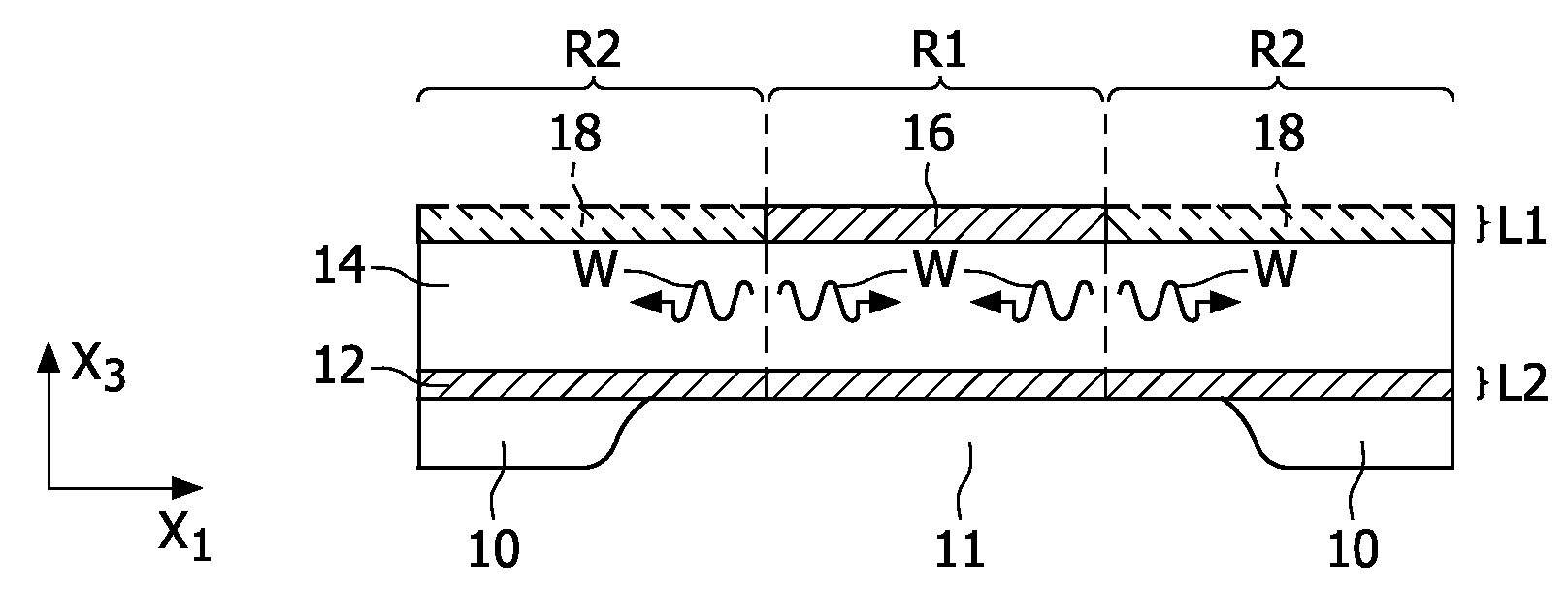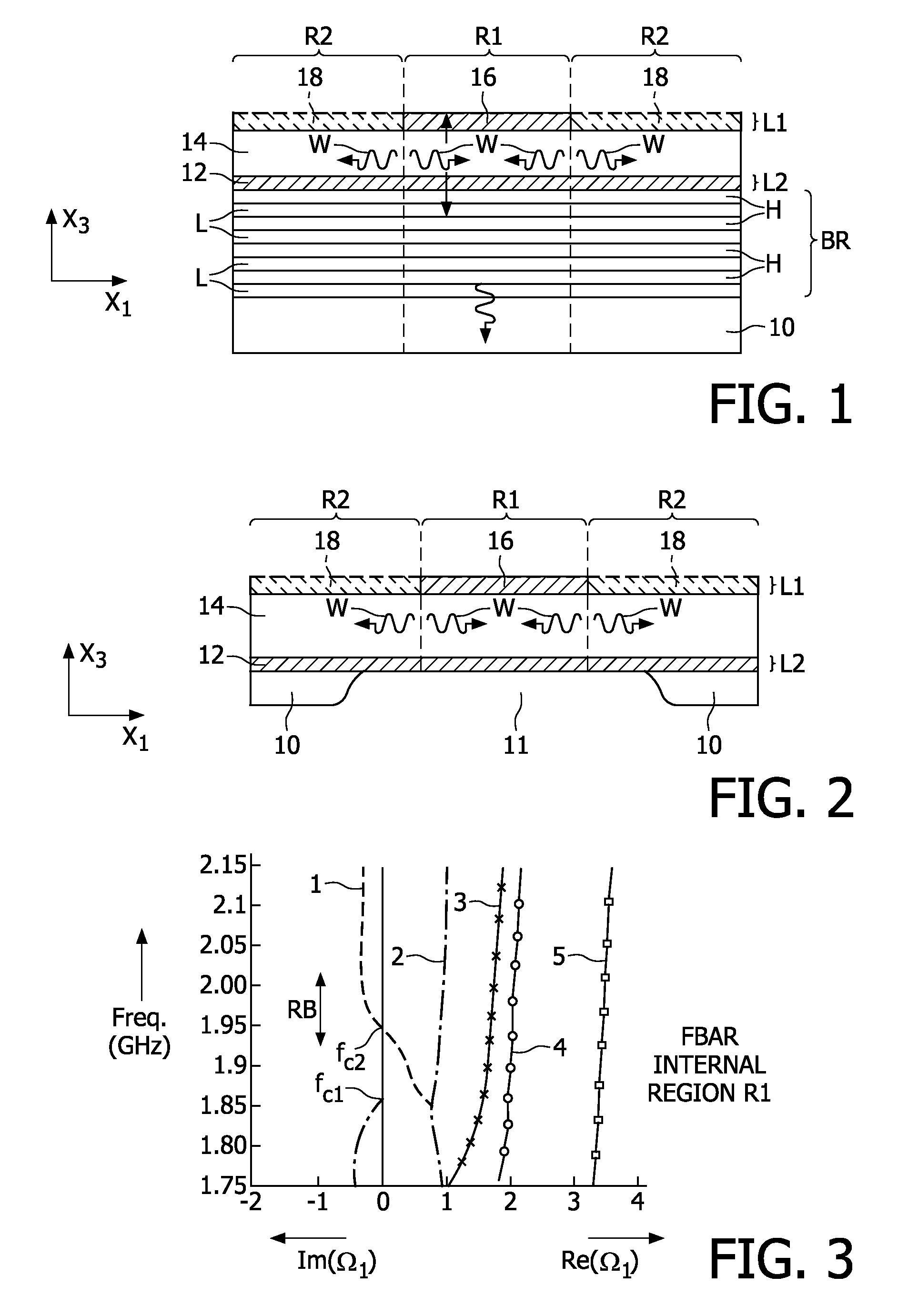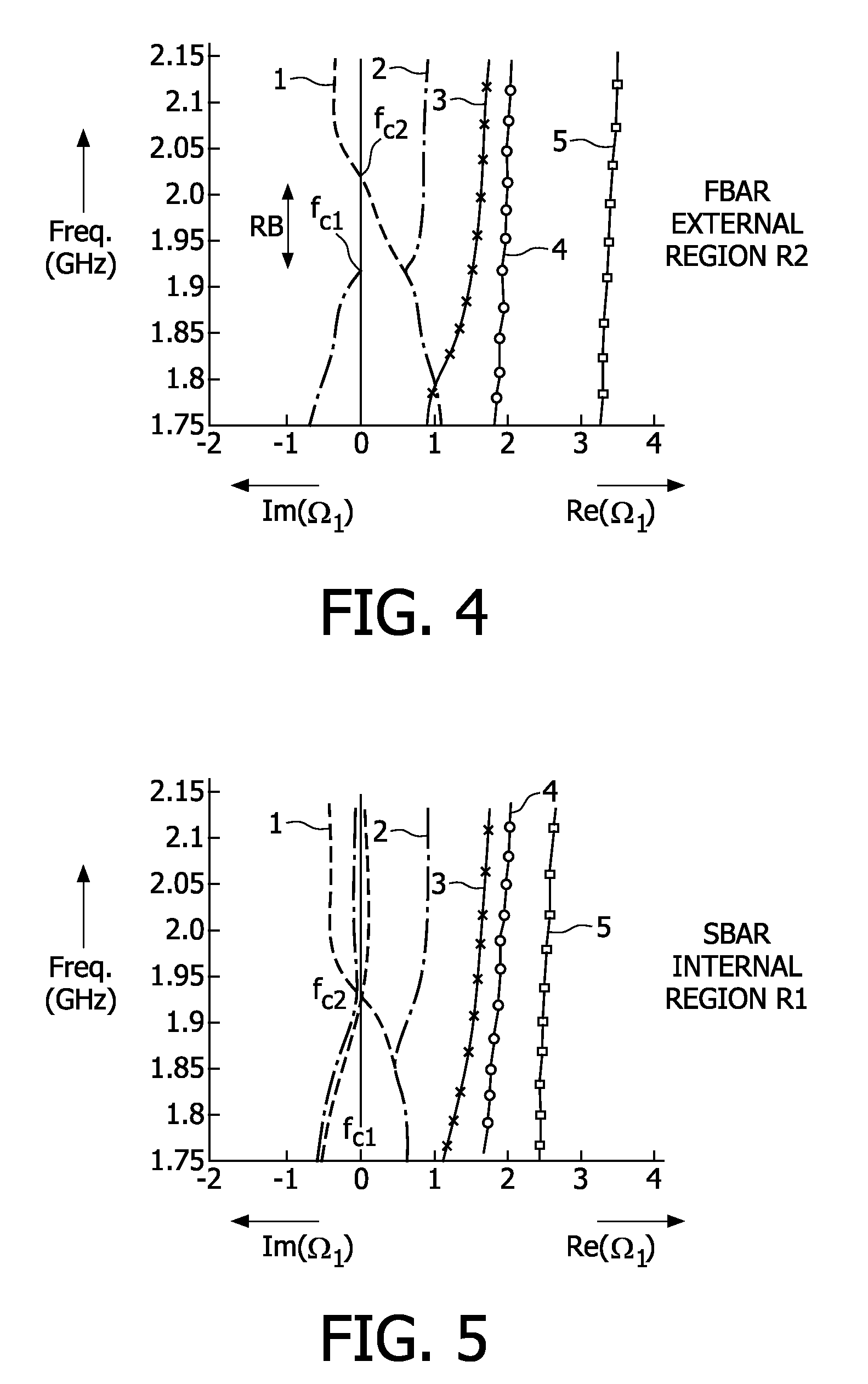Thin-film bulk-acoustic wave (BAW) resonators
a bulk-acoustic wave and thin-film technology, applied in piezoelectric/electrostrictive/magnetostrictive devices, piezoelectric/electrostriction/magnetostriction machines, electrical apparatus, etc., can solve the problems of inadequate explanation, no effective remedy, and construction should reduce loss, so as to reduce the loss of baw resonators and the effect of insertion loss of baw filters
- Summary
- Abstract
- Description
- Claims
- Application Information
AI Technical Summary
Benefits of technology
Problems solved by technology
Method used
Image
Examples
Embodiment Construction
[0035]The description of FIGS. 1 and 2 will initially describe the prior art BAW devices and the effect of the existence of the radiation-band. Afterwards the measures for overcoming the effect of the radiation-band will be described.
[0036]The SBAR shown in FIG. 1 comprises a substrate 10 typically of silicon (Si) which constitutes the entire area of the SBAR. An acoustic Bragg reflector BR, comprising alternate low (L)—and high (H)—mechanical-impedance layers, typically silicon dioxide (SiO2) and tantalum pentoxide (Ta2O5), respectively, is provided on the substrate 10. A piezoelectric structure is provided on the Bragg reflector BR. The piezoelectric structure comprises a bottom electrode 12 in a bottom layer L2 and typically covers an area of the bottom surface of a piezoelectric layer 14 which is greater than the area of a top electrode 16 in a top layer L1. The bottom electrode 12 comprises typically titanium and platinum (Ti / Pt) and the piezoelectric layer 14 typically compris...
PUM
 Login to View More
Login to View More Abstract
Description
Claims
Application Information
 Login to View More
Login to View More - R&D
- Intellectual Property
- Life Sciences
- Materials
- Tech Scout
- Unparalleled Data Quality
- Higher Quality Content
- 60% Fewer Hallucinations
Browse by: Latest US Patents, China's latest patents, Technical Efficacy Thesaurus, Application Domain, Technology Topic, Popular Technical Reports.
© 2025 PatSnap. All rights reserved.Legal|Privacy policy|Modern Slavery Act Transparency Statement|Sitemap|About US| Contact US: help@patsnap.com



